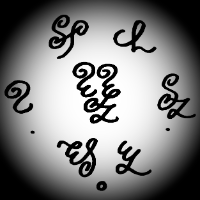Leaderboard
Popular Content
Showing content with the highest reputation on 01/22/2023 in all areas
-
1 point
-
Though not a fugue per se, I find this vaguely Purcell-ish sonata movement contrapuntally imitative enough to qualify as one of my personal favorite pieces in my production. I am rather unsure as to how a roughly two-minute long non-fugato movement with repeats is supposed to share ranks with my 2nd fugue in B minor, the Anno Domini 2020 fugue in G minor or the Halloween fugue in G-sharp minor, yet somehow my subjective unconscious seems to point in such a strange direction. Probably just me being nonsensically whimsical. Enjoy! Video link: Trio Sonata in F minor - Adagio. - YouTube1 point
-
Hello! This is my first sonata for piano trio in a major key. Took me one month to write. I tried to give more emphasis to the violin part that can also be played by flute, and the cello part is a bit less developed. The keyboard part can be played on piano or harpsichord (of course, without dynamics on harpsichord). I tried to maintain a classical style but with some liberties. I. Allegro (sonata form) II. Largo (ternary form) (A major) III. Minuet (and trio) (A major) IV. Rondo (sonata-rondo form) Looking for feedback! Score video (violin and piano): sonata.pdf1 point
-
1. Adagio Molto Moto: This movement explores the relationship between our mechanical world and our own expressiveness as a species. 2. Contemplatively Pious: This movement is a self-meditation for the listener. An opportunity to breath after the soundmass of the first movement and consider the world within which we live. 3. Savagely, Allegro Vivace: This movement is a savage, almost warlike movement that finishes the work.1 point
-
Dear Jonathon, Thank you so much for going through this long but immature work! I greatly appreciate your effort paid! 1st Mov: Yes definitely. I didn't know counterpoint at all so I didn't pay attention to fhe independence of voice then. Using countersubjects is not bad, but the interaction between it and the subject is not flowing enough, thus making it boring. The second subject begins b.59 for me, but you are right that it's not contrasting enough. There's also not a medial ceasura to indicate the 2nd subject's presentation. I probably won't remove it, since it's used as a hook in later movements. But I will think about that and may remove its later appearences too if removed here. 2nd Mov: I wasn't a detailed composer then. I will for sure polish it it I decide to make a final draft of it! You are right it ends abruptly esp. with the unaccompanied melody. I will add passages before it. 3rd Mov: Regarding the polyphony the commemt is very accurate. The most important thing to achieve polyphony is rhythm, but here the rhythm is not different enough. Regarding the slurs I probably used it with a pianistic concept, so it definitely should be changed. Thanks for pointing out that! The rest, oh my God, are gaps I didn't finish. I should fill them up!! Fourth Mov: Probably I will cancel the recitative marking. The transition is fine for me though. Fifth Mov: Glad that you find the symmetry! I was unable to extend and develop it them and I can now! Sixth Mov: What the hack is it with the tenuto?!😱 I WILL delete all of them!! I am surprised that you love the movement most actually! I probably press the tenuto sign whem pressing all the bars. My variation skill was not good at that time, but I'm glad you love it the most! Seventh Mov: I was then wanted to have a "transcendental" feeling by having the parallel motions, but I agree it's quite repeitive. I honestly don't know what the form is. I will probably delete quite a number of sections to make it glue better! I wanted a triumphant ending but here it's quite out of mood and honestly, stupid, and I will probably change it! I believe so😅, but will need a lot of time and effort! I will if I really want to and finish my current projects! I can't say how grateful I am to have your enormous effort to go through this. Thank you so much Jonathon! Henry1 point
-
I like the 5th movement scherzo better! It is more intense and serious although still lacking in dramatic dynamic changes. In fact besides a single ff marking at one point in the score, this movement is completely devoid of dynamic markings! Did you forget about the dynamic capabilities of the instruments? Scherzi are often characterized by and tend to feature sudden dynamic changes to help surprise the listener and give a kind of jolt when there's a sudden ff after a quiet section. And the sprightly rhythms and subdued intensity in the quiet sections are meant to create a playful atmosphere. Although this is still scherzo-like and quite enjoyable! I bet it would be more interesting still if dynamics were somehow included. Although the solo pizzicato section in the 2nd Violin does kind of serve as a temporary relief from the dynamics of the other parts. Thanks for sharing!1 point
-
I feel like starting with reviewing the 2nd movement first for some reason LoL. I feel like this piece was somewhat tame and happy for a scherzo. I think scherzi are usually expected to be intense, driving pieces and I feel like your major scales undermine this intensity making it seem like a trifle. Also, there were no sudden dynamic changes and the associated playfulness of a quasi-dance-like movement. I think if you turned all your scalar material in this scherzo from major to minor scales it would retain more intensity and leave an overall better and more serious impression (and least with me - imo). That's it for now! I will try to review the other movements separately.1 point
-
Finally for the final movement!! That timpani is a banger for me. The march seems repetitive but it's a funeral march so I definitely don't mind this. Great atmosphere here. The rest in b.30 seems a little bit off for me but I love the modulation to F minor. I always love this kind of octatonic relationship. The rest in b. 36 also seems a bit off for me. I would probably fill up the bar to bridge the two sections! Now I see why you keep the timpani hitting the D. The largo section begins in D minor and ends in D major! The theme in Fourth movement reappears in b.21! I don't feel redundant this time but find it beautiful after all those marches! The four notes motive as well! You should be really proud of the build up and the climax. I almost cry when hearing that. The power inside it is tremendous, especially at the end of this giant piece!! From b.37 I probably will not add slurs for the basses though, and instead use accents and non legato for them. What a great ending for the piece!! Jonathon, thanks for presenting your giant work here! Maybe I am too nitpicky sometimes but you for sure have the talent and technique. This power displayed in some of the passages, esp. the one in the last movement, tells me that you have the ability to write very good music. For me you can always improve on your technique, but the horizon and power behind it is hard to learn, and you have shown us that great potential! Having this courage and scope to write a gigantic piece is not easy, and you achieve this. I am sure we all have improvements and always have, but by writing this you will learn most, since writing a long one is different from a short one! It's not your current work finished, so what I say may be irrelevant to the present you! Hope that you will continue to produce music like this and share it here! Henry1 point
-
Hi, I listened to the first two movements. I'll go on later. Apart from the engraving and the virtual libraries sounding, the fugue is fine. I don't hear any inconsistencies, although the review by CompoSai is profound. The second mov. makes good contrast with its homophonic mood. It's nice to listen to works we've written years ago. Perhaps it would be funny to have a subfourm of "old works" with one condition: not rework them, just show them as they were.1 point
-
This is actually not true. String players can technically play more than 2 notes at a time. It is just impossible to sustain those notes or use quiet dynamics since the bow needs to be pressed so hard. I really dislike it when people spread false information on string playing btw. If you wonder if something is possible, check with a string player, not a book you read 3 years ago.1 point
-
I'll go through movement by movement. Movement 1: It was an enjoyable movement, but I noticed a few things. The opening fugue had an interesting subject and I think you harmonised it quite well, but it felt like for the other voices you wrote a measure, copied and pasted, and adjusted the notes. It's not necessarily wrong, but it does sound uninspired, and I think you could do much better. One part in the subject also reminded me of Liszt's Hungarian Rhapsody no. 2 . In other places throughout this movement some voices lose their independence by following another line in parallel thirds for too long. Also not necessarily wrong, but it does make it sound like 3 voices instead of 4. Another thing I noticed is, though it is in sonata form, I couldn't really pick out the themes. Might just need another listen, but I think it's a sign they don't contrast enough. This might also be caused by the monotony of the string samples. I also found the recitative part to be a bit random and disconnected. Maybe have more parts like that or just completely remove it? Besides these, the only issue I have are the weird rests, like what Quinn pointed out. Movement 2: This one was great fun. It had a real sense of motion and energy, something that I struggle emulating. One issue though, is that the enharmonic spelling was chaotic and there were rest issues like in the first movement. I won't point out specific instances since it's probably just from a lack of polish. Just be sure to go through all that. I also noticed the movement ends abruptly. Must not have written a coda? Movement 3: I liked the material in this one. I agree that the counterpoint could have been better. There were moments where it was more homophony than polyphony and other places where it was a little dissonant. I noticed some passages toward the end that have slurs which stretch over a bit of a long distance, and many of these notes were the same in succession, which defeats the purpose of the slur since you can't really do that in one bowing, you'd have to lift up. Examples measure 138 and 156. I also found the lengthy pauses in the middle and at the end to be unnecessary. Maybe they were supposed to be filled out later, but you didn't get to it? Can't tell. Movement 4: I liked that the middle movement was brief honestly. It helps give the sense of a midpoint. I think that marking those sections as recitative is unnecessary though, unless you're asking the string players to play it a specific way. I also think that the section starting on bar 19 was a bit abrupt and could use a smoother transition, unless your goal was for it to be abrupt. Movement 5: I thought this one could have been a bit longer. If you make this movement around 10 minutes or so, that will give the piece a nice symmetry. Movement 6: I honestly liked this one alot. Its more upbeat mood provided a great contrast to the rest of the piece. And though the variations weren't as "varied" as they could have been, I still think the movement holds up. On top of that, the melody was quite beautiful. However, I noticed that EVERY SINGLE NOTE of this movement has a tenuto mark. You may know now, but I'll explain anyway just in case. For string instruments, a tenuto instructs the players the use a fuller bowing. In other words, use more of the bow. If you want the whole movement to do this, that's perfectly fine. It would just be better to write at the start of each instrument "sempre tenuto", or something along those lines, instead of putting the tenuto mark on every note. Another thing is that you have tenuto marks on pizzicato. You can see how plucking with a fuller bowing doesn't make any sense. This movement also suffers from the weird rests problem. Other than that, this is probably my favourite movement thus far. Movement 7: I was a little disappointed that there was a pause on the mp3 since this was clearly supposed to continue directly from the previous movement. Oh well. I really enjoyed parts of it, especially the more dramatic section. I personally thought the section starting on measure 155 was a little repetitive and it honestly kind of bored me. I personally didn't really like the melody either, but that's just my opinion. I thought this movement suffered from a lack of strict structure, and I agree with you that the sections weren't glued together very well. Maybe rondo form would work nice? Or maybe sonata form? I don't know, but either way, reorganising the sections I think would benefit. I also noticed at the end that you briefly brought back some material from the start, which is always cool, but the ending itself didn't really satisfy me. This movement also suffers from weird rests syndrome. Overall, I think the piece has great potential, it just needs a lot of work. From seeing some of your other compositions, I think you are completely capable of turning this piece into an absolute banger 👍. Thanks for sharing.1 point
-
Well, Henry, I listened to the first movement and glanced through the score. Pretty ambitious competing with Beethoven, particularly Op 131. (It was that quartet that switched me on to the string quartet as a suitable composing medium.) Basically this piece has great potential without much change. It's an achievement so congrats at that. I didn't notice any problems with the score except possibly condensing those pairs of demisemiquaver rests into semiquavers. The problem is with the rendering. It doesn't do this work justice. Any chance you could export it to Musescore 4? Mind, I don't know what solo instruments sound like in Musescore 4, far from you becoming a guinea pig. As it stands, dynamic changes are inadequate and sometimes articulations could be improved, like on trills and marcatos - but you probably know this already. It has to be said that you've chosen a superb model for a quartet. Maybe transpose it to a different key to disguise the Beethoven-ness about it! Great work. I'll have a listen to the Presto movement later! 🙂1 point
-
It's a nice piece but alas, not my kind of music. My views on cinematic scoring are well known! It barely seems to move out of the tonality it starts with and seems to rely on percussion to move it forward. No variation in dynamics, so for it's length that's fine but were it to be extended it would need that variation. Otherwise the droning pedal-styled bass would become wearysome. The harmony is good though and the production values? A little heavy on the volume so it loses clarity here and there. Cheers, Quinn.1 point
-
Yes, good use of the orchestra. Nice change at 1:00 (percussion and chorus, I think). And yes, beautiful harmonies from 1:40.1 point

.thumb.png.8b5b433a341551e913a34392660bc95b.png)




